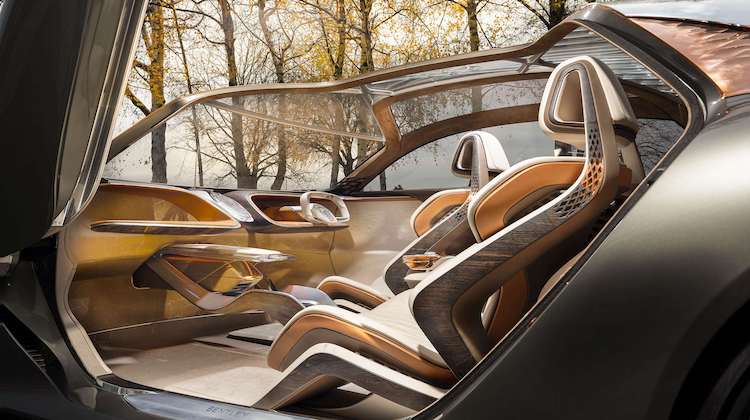Yes and no. Just because a car’s interior is trimmed in sustainable materials doesn’t mean it’s good for the environment.
That’s the assertion John Voelcker, an analyst on automotive sustainability, made in a New York Times article this week — and he has a point.
“The materials and manufacturing burden of a new vehicle is only 6 percent to 25 percent of its lifetime carbon footprint,” he said. “All the rest is the energy used to move it around from the years it’s on the road.”
That means a car with an interior constructed from sustainable materials can still be 75 percent to 94 percent bad for the environment.
His comments appeared in an article about how luxury automakers are experimenting with sustainable materials, including fabrics and trim made from recycled fish nets, reclaimed wood and vegetation.
In the article, he doesn’t discount the benefit of sustainable materials. Rather, he makes the point that only electric vehicles can be considered truly sustainable.
“An electric car with interiors made out of anything short of baby panda skin is going to be way better for the planet than a gas-powered vehicle with an all-recycled interior,” he said.
In other words, a Tesla trimmed in leather is better for the environment than a Mercedes-Benz trimmed in Dinamica, a sueded fabric made from recycled plastic bottles and clothing fibers. The former is sustainable; the latter is just a gimmick.
Of course, an electric vehicle trimmed in sustainable materials is even better for the environment. And really, that should be the goal.
But until electric vehicles are ubiquitous, we should at least be aware of when we’re being duped.
Then again, bullshit is sustainable too. Right?

FInally Someone Had The Guts To Say IT
The Tesla comment is curious, their high volume vehicles are trimmed in vinyl now, vegan you know.
Sustainable materials- actually from my view look at how things are fabricated, how well can the parts be taken apart for service or recycling? There are so many ways that manufacturing efficiency pushes those factors aside. The headrest or armrest where the cover was turned right side out, a steel frame inserted and foam injected. Cannot be replicated, if worn, toss. To recycle? Too expensive to harvest. The same for many new center console armrests, bonded together. One has to break them apart and hope you can figure out a way to reconstruct. Door panels with plastic studs turned into rivets.
In Germany there was a mandate to push the automakers to take on the responsibility to recycle their products at end of life, the percentage targets were modest, few automakers are changing design schemes to improve the recycle percentage.
I could expand this into a tirade about fastener-less snap assembly where there is no provision for disengagement- seat side garnish and even headrest stalk sockets… ( but that’s an old ballad, remember the 90’s Ponitiac Sunfire? To open the clip to remove the headrest one had to dig through the molded in place backrest contour foam )
Aren’t we taking this environmental thing a bit too far,
No matter how hard we try we can’t stop it totally. Things have changed a lot older cars when fired up on the shop can give you a headache, New cars are not emitting as much smog the Tesla is electric less smog. Is the interiors emoting lots of smog.?
Let’s be honest to be 100% smog free isn’t going to happen after all we’re trimmers we’re using what the suppliers are selling,
Do you believe our customers would enjoy driving on
Hard plastic seats?
Let’s be sensible let’s talk how we are going to
Make a living it’s hard now with the virus.
We need to discuss our real Problem when do we start making a living again.